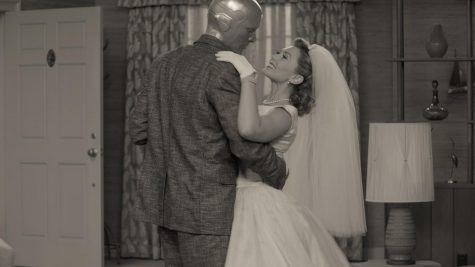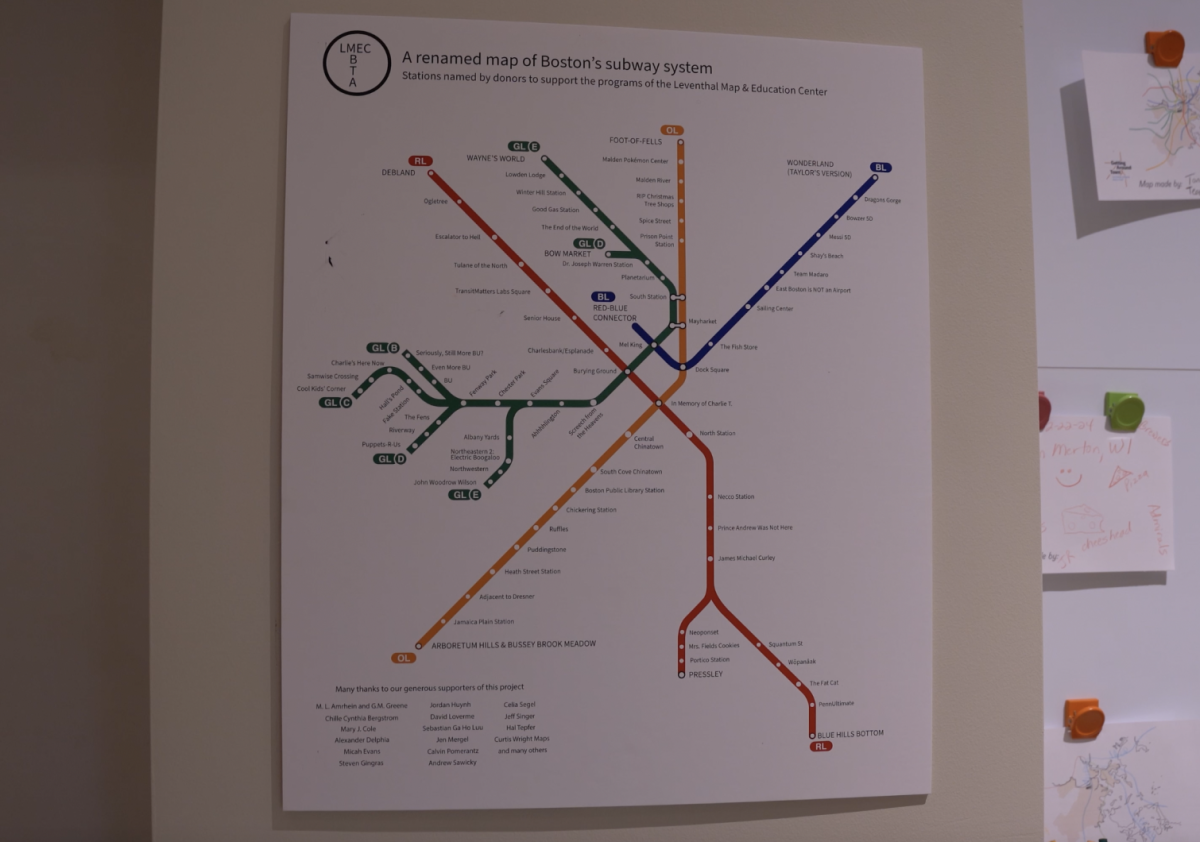Review: For a moment, Marvel’s ‘WandaVision’ breaks free from MCU mold
Photo Courtesy of Marvel Studios
Elizabeth Olson as Wanda Maximoff and Paul Bettany as Vision in Marvel Studios’ WANDAVISION exclusively on Disney+. ©Marvel Studios 2021. All Rights Reserved.
March 9, 2021
It’s been over a year and a half since the release of Marvel’s last project. Since then, fans anxiously waited for the studio to continue kicking off its newest phase of the Marvel Cinematic Universe, or MCU, after its first three-phase conclusion with “Avengers: Endgame” in 2019.
With multiple delays and changes to the original plan for phase four, Marvel Studios debuted its newest project and first series on Disney+, “WandaVision.”
The show stars Wanda Maximoff (Elizabeth Olsen) and Vision (Paul Bettany), who were first introduced into the Marvel Universe as supporting characters in “Avengers: Age of Ultron.” Normally known for blasting bad guys with magic and energy beams, the unusual couple is instead found living a normal, suburban life in Westview, New Jersey. But, of course, not everything is what it seems.
The series is largely presented as a sitcom, paying tribute to multiple decades of television as it progresses. The first two episodes are displayed in black-and-white and give multiple nods to shows like “The Dick Van Dyke Show,” “I Love Lucy” and “Bewitched.”

Though these episodes are rather slow, seeing Olsen and Bettany take on the challenge of playing their roles while still conforming to the style of 50s-60s television made them worth watching. This goes not only for the beginning of the series, but also for the later episodes featuring future decades as well.
While some MCU fans may have been disappointed at the series’ beginning providing little to no action than what they’re accustomed to, the episodes provide several hints that indicate something larger is at play in the town of Westview.
In fact, the show’s most compelling selling point is that it is much different from anything Marvel has released in the past. This provides an opportunity for newer audiences who may not have been interested in the superhero genre before to experience the romance and story that is Wanda Maximoff and Vision.
Since their introduction to the MCU, Wanda and Vision were commonly overshadowed by the main characters of the first three Marvel phases. Now with a new phase and Disney+, they’re given the opportunity to develop as lovers as well as individuals.
Though the show places more of an emphasis on Wanda’s story than Vision’s, especially during the final third of the season, it’s nice to finally see these characters step onto their own mantles in the MCU — even if it’s only for one show.
The series also features an extended cast of new and returning characters from the franchise. Agnes (Kathryn Hahn), the wickedly “nosy neighbor” of Wanda and Vision; Monica Rambeau (Teyonah Parris), who was first introduced as a child in “Captain Marvel;” Darcy Lewis (Kat Dennings), from the first two “Thor” films and Agent Jimmy Woo (Randall Park) who made his Marvel debut in “Ant-Man and the Wasp.”
Episodes three through six are where “WandaVision” performs the strongest. As its extended characters are trying to figure out the Westview mystery, so is the show’s audience. Though the pacing may feel a little choppy as it skips from a sitcom to something typical of a “Marvel” movie, watching the show unfold — with each episode grander than the last — made for an exciting viewing experience and proved just what Marvel Studios could accomplish with Disney+ as an additional medium.
As the show reaches its final segment, “WandaVision” begins to shift back to the conventional MCU mold that Marvel fans have grown accustomed to over the years. While this isn’t necessarily a bad thing, it may discourage viewers who were expecting less of the same from the franchise.
Despite this, the last three episodes set more of a spotlight for Wanda, which gives her character even greater depth. While this means we see less of some of the show’s supporting characters, it gives the series the opportunity to examine Wanda’s grief and how her past experiences have shaped her into who she is now. This, in turn, makes her an even more compelling character and prepares her and the audience for the leading role she’ll play in Marvel’s fourth phase of movies.
Overall, “WandaVision” is a thought-provoking, charming and exciting addition to the next chapter of the MCU. Though it may not achieve everything it set out to accomplish, the show’s strong performances by Olsen and Bettany and its satisfactory ending bring enough to the table for both Marvel and non-Marvel fans to enjoy.


















